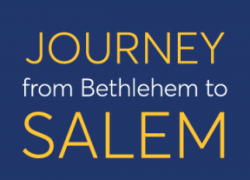September 28 history blog post: One of a series of short essays to provide the cultural, political and geographical context for the 1766 travelers.
Richard Utley, age 46
Sally Utley, 59
Anna Maria Schrobb, 47
Anna Maria Kraus, 46
Anna Marie Brendel, 27
Elisabeth Biehler, 25
Catharina Beroth, 24
Elisabeth Oesterlein, 17
Magdalena Hirt, 16
Salome Meurer, 16
Johanna Elisabeth Colver, 16
Dorothea Schütz, 16
Maria Elisabeth Engel, 16
Maria Magdalena Höpfner, 15
Anna Elisabeth Werner, 15
Maria Schneider, 14
Anna Rosina Böckel, 14
Maria Elisabeth Kraus, 14
Maria Christina Jorde, 13
It may be difficult for us to imagine what was in the minds of these individuals as they set out on October 2, 1766 to walk 530 miles to the Wachovia tract in North Carolina. Bethabara had been established thirteen years earlier by 11 Moravian men, and while a number of Moravians traveled back and forth between Bethlehem and Bethabara, there was still an element of the unknown for these girls.
The Moravians had organized Bethlehem as a communal economy where everyone worked toward the betterment of the community and to bolster the missionary efforts. The founding of Bethabara was based on missionary outreach, and it too had a communal economy. Both communities became centers of trade for their regions. And some married couples had already moved to Bethabara, but for the community to grow and prosper, there needed to be more families, which necessitated bringing more girls and young women.
Today we cannot imagine sending a 13-year-old on a potentially dangerous journey to a fledgling community in the wilderness of North Carolina. We can surmise, however, that Maria Chistina Jorde, the youngest at age 13, would already have learned useful skills and been well versed in running and maintaining a household.
Virginia S. Hart A’75
Read Salome Meurer’s journal:
Aaron S. Fogleman, “Women on the Trail in Colonial America: A Travel Journal of German Moravians Migrating from Pennsylvania to North Carolina in 1766,” Pennsylvania History, Vol. 61, No. 2, April 1994
